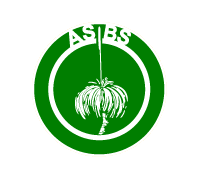
ASBS Newsletter – Book Review
George Bentham Autobiography 1800-1834
Edited by Marion Filipiuk
(From ASBS Newsletter Number 95, June 1998)
Publisher: University of Toronto Press, Canada, 1997.
pp xlviii, 597.
Price: US$100.00
Buy (or at least read) this absorbing book for background on one of our 'favourite sons' and the times he lived in, not for anything on Australian botany. It takes us through Bentham's early years, up to Tuesday 11 November 1834 and hence ends long before he became particularly involved in our flora.
An extensive Introduction by Marion Filipiuk describes the Bentham family (his uncle Jeremy was a prominent philosopher and his father Samuel an important naval administrator, engineer and inventor), summarises his life to 1834, and explains how the text was edited. The notes are a model of how such a work should be annotated, with explanations and full references for works cited. The autobiography itself occupies 437 pages. Following it are 74 pages of notes on the text, and four appendices in 83 pages - of textual emmendations, textual variants, an index of plant names, and an index of persons and works. The only Australian plants mentioned are Acacia (3 spp.), Banksia, Doryanthes excelsa, Drosera, Goodenia and some 'Metrosideros', all in reference to plants seen in glasshouses or herbaria.
Bentham began the autobiography in 1867, largely for the benefit of his wife Sarah, and later (after her death in 1881) for his own pleasure in recalling his early life, as well as for the benefit of those who would come after him. It consists of his recollections, liberally interspersed with quotes from his diary and from letters. From 1805 to 1807 his family lived in Russia where he learnt Russian, French and Latin and 'German from a Finnish nurse', leading to a strong interest in languages (he later picked up some Swedish, Spanish and Hebrew). From 1814 to 1826 they lived in France, and during a visit to Britain in 1823 he felt a foreigner, so 'French' had he become.
We learn how he became interested in botany in the spring of 1817 while the family was staying near Angouleme, in southern France. After idly picking up a copy of de Candolle's Flore Francaise, bought by his mother, he was 'struck by the analytical tables for the determination of plants, which fell in with the methodical and tabulating ideas I had derived from the study of some of my uncle's works and from what I had attempted in geography and statistics. I immediately went out into the backyard, picked up the first weed I met with and set about finding, out its name. It was the Salvia pratensis not the easiest for a beginner - on account of the abnormal structure of the stamens - and I had not the slightest idea of what was meant by a calyx, a corolla or any of the most common botanical terms.' On 22 August 1818, at Montauban, 'I first began to dry specimens for preservation . . . , carelessly perhaps at first, but before the season was over, I had collected between one and two hundred species.' He subsequently built up his herbarium through collecting, exchange and donation. There is a detailed account of his long botanical excursion with George Arnott through the Pyrenees in the summer of 1825 that led to his first botanical publication.
Travel seems to have held quite some interest, for he describes his journeys in detail - the kind of transport, the countryside traversed, the time taken, stops for meals, the hotels etc. At every opportunity he visited botanists and botanic gardens.
A fascinating aspect is his mention of meeting many of the 'big' names of the day - the de Candolles, Brown, Lindley, William Hooker, Agardh, Kunth, Meisner etc. - often with observations on them and botany. Also absorbing are his accounts of a meeting of German naturalists in Hambwgh in 1830 and the Vienna Congress of 1832. Then, as now, the 'extra-curricular' discussions were commonly more beneficial than the lectures. I was struck by the fact that many herbaria were private (like Bentham's own at that period).
Although of a somewhat retiring nature, Bentham enjoyed his social life, which included visits to friends, dancing, the theatre and opera. Even during overnight stops on his travels he would go to a dance or performance. He clearly had an eye for the ladies, and was engaged once and almost a second time before marrying in 1833. From our viewpoint he appears somewhat arrogant, referring on a number of occasions to the 'lower classes'.
His account of the struggle between his interest in law and botany reads almost like a novel, ending when, after his marriage, he decided that his means were sufficient to enable him to devote himelf to botany, 'a determination which I never, during the long period of my subsequent career, had on any occasion any reason to repent of.'
He was no conservationist, regarding man-made 'improvements' favourably. In Britain, for example, he considered Norbury Park near Wimbledon 'as particularly beautiful, in the manner in which the planters have profited of the hills and valleys and other accidents of nature, which are all improved by art.'
In summary, a very readable book.
Reviewer: Alex George
'Four Cables',
18 Barclay Road,
Kardinya, Western Australia 6163